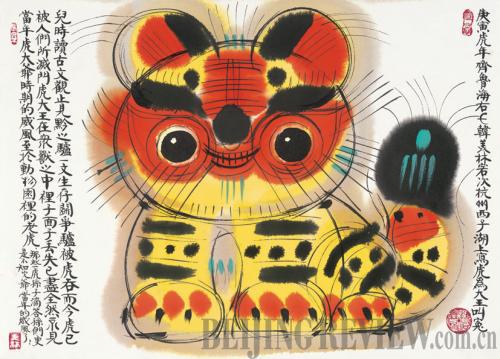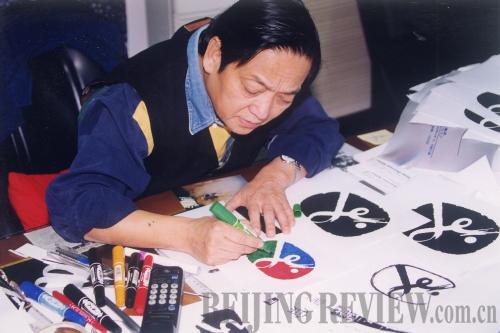|
 |
|
ALIVE ON PAPER: This depiction of a tiger is one of Han Meilin's art works (COURTESY OF HAN MEILIN ART MUSEUM) |
He started his painting career at 13 and has never stopped his progress along his singular road for 60 years—even during harsh conditions brought about by the disastrous "cultural revolution" (1966-76). He is the first Chinese painter to have ever held a one-man exhibition in the United States. He has had an art studio named after him, the only one of its kind under the auspices of China's Artists' Association.
These kudos accrue to Han Meilin, one of the most prolific of China's contemporary painters and sculptors. Despite now being 73, he still often works for more than 18 hours a day, producing up to 200 paintings.
Born into a very poor family in 1936 in east China's Shandong Province, Han's interest in art began when he joined the army at 13. Two years later, he became a teacher of fine arts in a primary school.
 |
|
PRODIGIOUS PAINTER: Han Meilin works in his studio (COURTESY OF HAN MEILIN ART MUSEUM) | In 1955, he was admitted to the Central Academy of Arts and Design, now part of the prestigious Tsinghua University, and graduated in 1960. From then until the disastrous "cultural revolution," when he was sent to prison and forced to stop painting because of accusation of "counter revolution" for quite a few years, he began to explore more professional methods of creative art.
But "My passion for painting never stopped even under such harsh conditions," said Han in an interview with Beijing Review. He secretly practiced painting by dipping the chopsticks into water and drawing on his trousers.
The "cultural revolution" had not ended when he was released from prison. "We still didn't have the freedom to draw anything we liked. We couldn't draw people, because that could cause a lot of problems at that time. That is how I started to draw small animals," Han said.
He gave animals human beings' feelings and emotions and made all his animals appear very lively.
Han said he tried many ways to make the animals come alive on paper. "I first wiped water on the paper and drew the picture while the paper was still wet. Then I found the ink penetrated the paper to such a degree it made the animals look very hairy."
He also tried many methods to prevent ink losing its color, such as mixing ink with soy sauce, fruit juice, tea or alcohol.
All these techniques are just painting skills, Han said, but they are not the most important part of creativity. "Love is. It is just because I experienced so much loss and suffering that I cherish love very much today."
| 